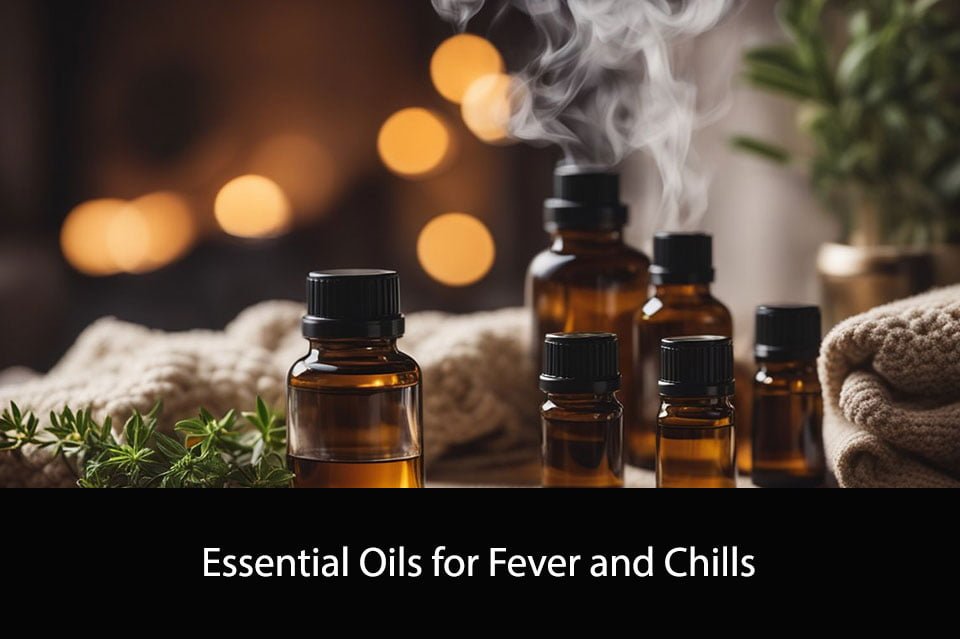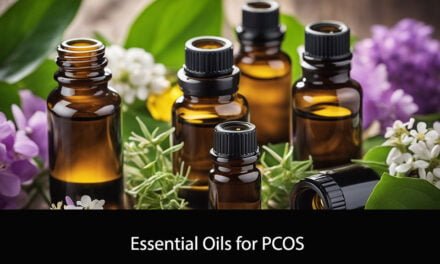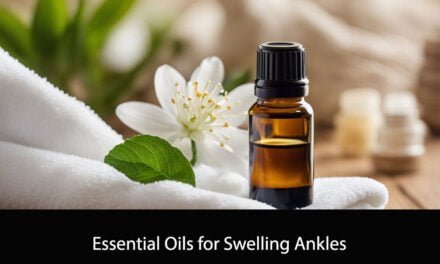Essential oils have been used for centuries as a natural remedy for various ailments. One of the most common uses of essential oils is for treating fever and chills. Fever and chills are often caused by infections, such as the flu or a cold, and can be accompanied by other symptoms like headaches, body aches, and fatigue. Essential oils can help alleviate these symptoms and promote healing.
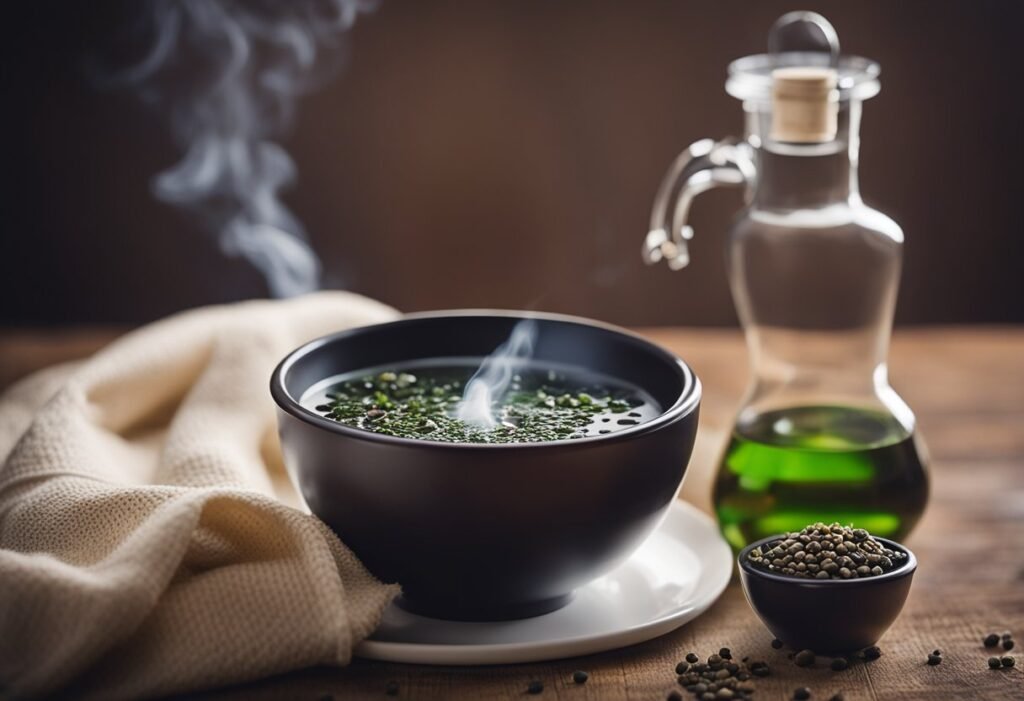
When using essential oils for fever and chills, it is important to choose the right oils for your specific symptoms. Some essential oils are better for reducing fever, while others are more effective at relieving chills and body aches. Additionally, it is important to use high-quality, pure essential oils to ensure their effectiveness and safety.
In this article, we will discuss the best essential oils for fever and chills and how to use them safely and effectively. We will also provide tips on how to use essential oils in combination with other natural remedies to promote healing and relieve symptoms.
Understanding Essential Oils
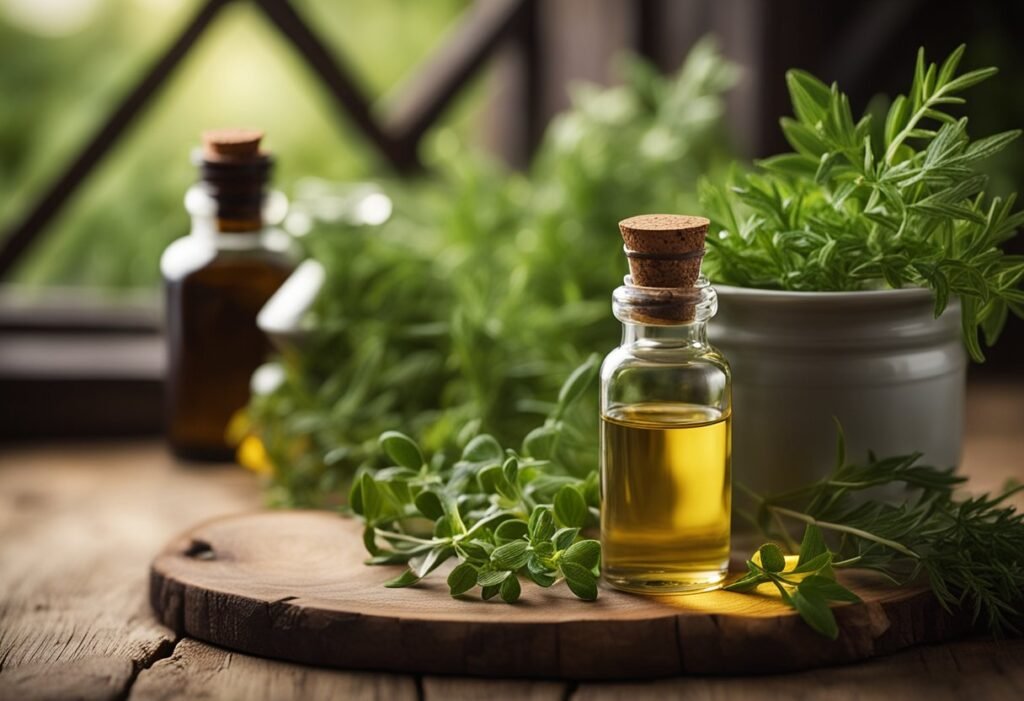
Historical Use
Essential oils have been used for centuries to treat a variety of ailments, including fever and chills. In ancient Egypt, essential oils were used in the embalming process and for medicinal purposes. The Greeks and Romans also used essential oils for medicinal purposes, and the practice continued throughout the Middle Ages.
How Essential Oils Work
Essential oils are extracted from plants and contain the plant’s natural fragrance and healing properties. When inhaled or applied topically, essential oils can enter the bloodstream and affect the body’s systems. The chemical makeup of each essential oil determines its specific therapeutic properties.
Some essential oils, such as peppermint and eucalyptus, have cooling properties that can help reduce fever and chills. These oils can be applied topically or inhaled through steam inhalation. Other essential oils, such as ginger and cinnamon, have warming properties that can help improve circulation and reduce chills.
It’s important to note that essential oils should not be used as a replacement for medical treatment. If you have a fever or chills, it’s important to seek medical advice from a healthcare professional. However, essential oils can be used as a complementary treatment to help alleviate symptoms.
Benefits of Essential Oils for Fever and Chills
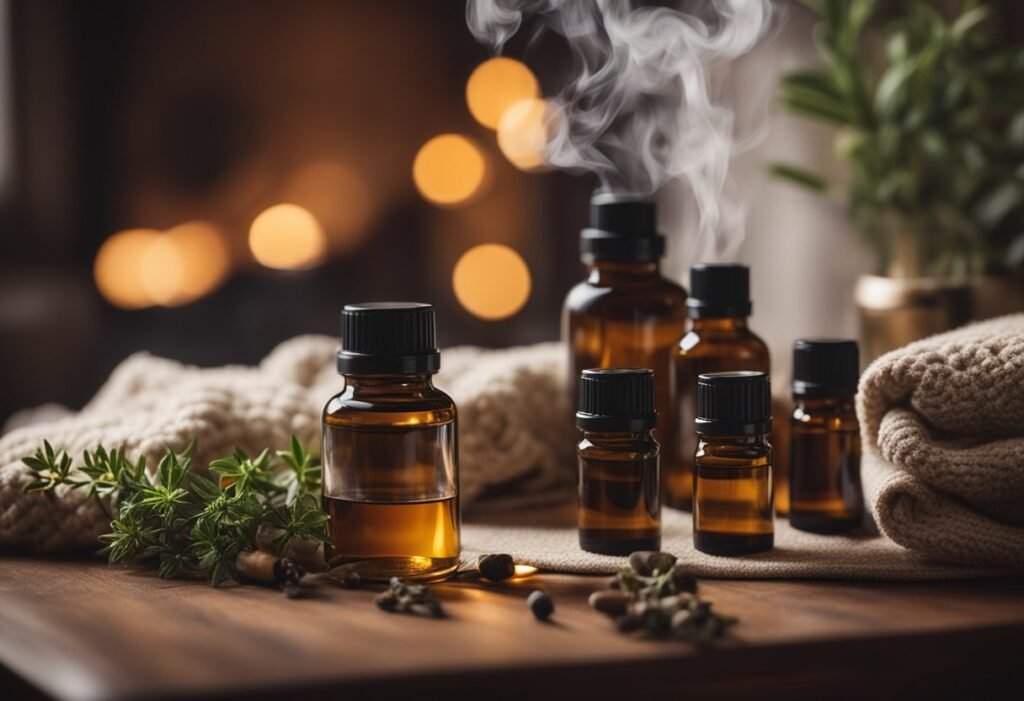
When it comes to managing fever and chills, essential oils can be a natural and effective solution. Here are some of the benefits of using essential oils for fever and chills:
Thermoregulation Enhancement
Essential oils like peppermint, eucalyptus, and ginger have thermoregulatory properties, which means they can help regulate body temperature. When applied topically or inhaled through aromatherapy, these oils can induce a cooling effect and reduce fever symptoms.
Peppermint oil, for example, contains menthol, which has a cooling effect on the skin and can help reduce body temperature. Eucalyptus oil contains cineole, which can help clear respiratory passages and reduce fever symptoms. Ginger oil has anti-inflammatory properties that can help reduce fever and chills.
Immune System Support
Essential oils can also support the immune system, which is important for fighting off infections that can cause fever and chills. Oils like tea tree, lavender, and frankincense have antimicrobial properties that can help kill bacteria and viruses.
Tea tree oil, for example, has been shown to be effective against a variety of bacteria and viruses. Lavender oil has anti-inflammatory properties that can help reduce fever and chills, while frankincense oil can help boost the immune system and reduce inflammation.
In conclusion, essential oils can be a natural and effective solution for managing fever and chills. By enhancing thermoregulation and supporting the immune system, essential oils can help reduce symptoms and promote overall health and wellness.
Top Essential Oils for Fever and Chills

When it comes to treating fever and chills, essential oils can be an effective natural remedy. Here are some of the top essential oils that we recommend:
Peppermint Oil
Peppermint oil is known for its cooling and soothing properties, which can help reduce fever and chills. It also has anti-inflammatory and analgesic properties, which can help alleviate pain and inflammation associated with fever. To use peppermint oil, add a few drops to a carrier oil such as coconut oil and massage onto the chest, back, and temples. You can also add a few drops to a bowl of hot water and inhale the steam.
Eucalyptus Oil
Eucalyptus oil is another essential oil that can help reduce fever and chills. It has antiviral and antibacterial properties, which can help fight off infections that cause fever. It also has a cooling effect that can help bring down body temperature. To use eucalyptus oil, add a few drops to a diffuser or humidifier and inhale the steam. You can also dilute it in a carrier oil and apply it topically.
Tea Tree Oil
Tea tree oil is known for its antiseptic and antimicrobial properties, which can help fight off infections that cause fever. It also has anti-inflammatory properties, which can help reduce inflammation and pain associated with fever. To use tea tree oil, add a few drops to a carrier oil and apply it topically to the chest, back, and feet.
Lavender Oil
Lavender oil is a versatile essential oil that can help reduce fever and chills. It has anti-inflammatory and analgesic properties, which can help alleviate pain and inflammation associated with fever. It also has a calming effect that can help promote relaxation and sleep. To use lavender oil, add a few drops to a diffuser or humidifier and inhale the steam. You can also dilute it in a carrier oil and apply it topically.
Overall, essential oils can be a safe and effective natural remedy for fever and chills. However, it’s important to use them properly and consult with a healthcare professional if you have any concerns or underlying health conditions.
Application Methods
Topical Application
Essential oils can be applied topically to the skin to help reduce fever and chills. However, it is important to dilute the essential oil with a carrier oil such as coconut or sweet almond oil before applying it to the skin. This helps to prevent skin irritation and other adverse reactions. A recommended dilution ratio is 1-2 drops of essential oil per teaspoon of carrier oil. The mixture can be applied to the forehead, chest, back, and bottoms of the feet. It is important to avoid applying essential oils near the eyes, nose, and mouth.
Aromatherapy
Aromatherapy is another effective way to use essential oils for fever and chills. Essential oils can be diffused into the air using a diffuser or added to a bowl of hot water. The steam from the hot water will help to disperse the essential oil into the air. Alternatively, essential oils can be added to a warm bath. This will help to relax the body and reduce fever and chills.
Ingestion Precautions
While essential oils can be ingested, it is important to exercise caution when doing so. Some essential oils can be toxic when ingested, and others can cause serious adverse reactions. It is important to consult with a qualified healthcare professional before ingesting any essential oils. Additionally, it is important to only use high-quality, pure essential oils that are safe for ingestion. When using essential oils for fever and chills, it is recommended to use them topically or through aromatherapy instead of ingestion.
Safety and Precautions
Dilution Guidelines
When using essential oils for fever and chills, it is important to dilute them properly before application. Undiluted essential oils can cause skin irritation, allergic reactions, and other adverse effects. We recommend diluting essential oils with a carrier oil, such as coconut or almond oil, before applying them to the skin.
The general rule of thumb for dilution is to use a 2% concentration of essential oil to carrier oil. This means adding 12 drops of essential oil to one ounce of carrier oil. However, some essential oils are more potent than others and may require a lower concentration. Always check the dilution guidelines for each individual oil before use.
Potential Side Effects
While essential oils can be helpful for fever and chills, they can also have potential side effects. Some essential oils may cause skin irritation, allergic reactions, or respiratory problems when inhaled. It is important to use essential oils in moderation and to always follow dilution guidelines.
In addition, some essential oils may be toxic when ingested. We do not recommend ingesting essential oils unless under the guidance of a qualified healthcare professional.
Interactions with Medications
Essential oils may interact with certain medications, including blood thinners and antidepressants. If you are taking any medications, it is important to speak with your healthcare provider before using essential oils for fever and chills.
In general, it is best to avoid using essential oils if you are pregnant or breastfeeding, have a history of seizures or epilepsy, or have a serious medical condition. Always consult with a qualified healthcare provider before using essential oils for any purpose.
DIY Recipes for Fever and Chills
When it comes to fever and chills, essential oils can be a great natural remedy. Here are some simple DIY recipes that you can try at home:
1. Peppermint Oil and Lavender Oil Blend
Peppermint oil has cooling properties that can help to reduce fever, while lavender oil can help to soothe and calm the body. To make this blend, mix 2-3 drops of peppermint oil with 2-3 drops of lavender oil and dilute with a carrier oil such as coconut oil or almond oil. Apply the blend to your temples, chest, and back of the neck.
2. Eucalyptus Oil and Tea Tree Oil Steam
Eucalyptus oil has antibacterial and antiviral properties that can help to fight off infections, while tea tree oil can help to boost the immune system. To make this steam, boil water in a pot and add 2-3 drops of eucalyptus oil and 2-3 drops of tea tree oil. Cover your head with a towel and inhale the steam for 10-15 minutes.
3. Ginger Oil and Lemon Oil Massage
Ginger oil has warming properties that can help to reduce chills, while lemon oil can help to detoxify the body. To make this massage blend, mix 2-3 drops of ginger oil with 2-3 drops of lemon oil and dilute with a carrier oil. Massage the blend onto your chest and back.
Remember to always dilute essential oils with a carrier oil before applying them to your skin. Also, if your fever or chills persist or worsen, seek medical attention from a healthcare professional.
Choosing Quality Essential Oils
When it comes to using essential oils for fever and chills, choosing high-quality oils is essential. Here are a few tips to help you select the best oils:
- Look for oils that are 100% pure and natural. Avoid oils that contain synthetic fragrances or additives, as these can be harmful and may not provide the same therapeutic benefits.
- Check the label for the Latin name of the plant species used to make the oil. This is important because different species of plants can produce oils with different properties and effects.
- Choose oils that have been extracted using a method that preserves the plant’s natural compounds. Steam distillation is the most common method used for extracting essential oils, but some oils may be extracted using other methods such as cold pressing or solvent extraction.
- Consider the source of the oil. Oils that are sourced from plants grown in their native environment and harvested at the right time tend to be of higher quality.
- Finally, look for oils that are sold in dark glass bottles. This helps to protect the oil from light and prolong its shelf life.
By following these guidelines, you can ensure that you are using high-quality essential oils that are safe and effective for managing fever and chills.
Frequently Asked Questions
Which essential oils are known to help reduce fever in children?
Some essential oils that are known to help reduce fever in children include peppermint, eucalyptus, and lavender. These oils have cooling properties that can help bring down body temperature.
How should essential oils be applied to the body to alleviate fever symptoms?
Essential oils can be applied topically to the skin or inhaled through a diffuser. When applying topically, it is important to dilute the oil with a carrier oil such as coconut or olive oil. For inhalation, add a few drops of the oil to a diffuser and breathe in the steam.
Can peppermint oil be safely used on children to lower fever, and if so, how?
Peppermint oil can be safely used on children to lower fever. However, it should be diluted with a carrier oil and applied to the feet or chest. It should not be applied directly to the face or near the nose.
What are the recommended essential oils for managing fever in adults?
Some recommended essential oils for managing fever in adults include peppermint, eucalyptus, thyme, and tea tree oil. These oils have antiviral and antibacterial properties that can help fight off infections.
Are there any specific Young Living or doTERRA oils that are effective for treating fever and chills?
While there are no specific Young Living or doTERRA oils that are effective for treating fever and chills, many of their oils have properties that can help alleviate symptoms. It is important to choose high-quality oils and follow proper dilution guidelines.
What are some natural methods to break a fever using essential oils?
Some natural methods to break a fever using essential oils include applying a cool compress with peppermint oil, taking a bath with eucalyptus oil, and inhaling steam with thyme or tea tree oil. It is important to stay hydrated and rest to help the body fight off the infection.

